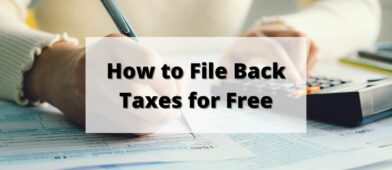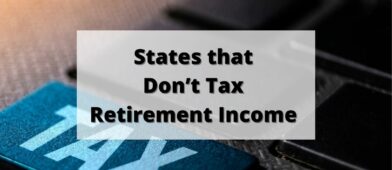If you’re a real estate investor or plan to be, you need to be familiar with a 1031 exchange, which is a strategy that enables you to sell one investment property in exchange for another without incurring taxes in the process.
Does that sound too good to be true? Maybe so, but 1031 exchanges are recognized by the IRS and fall within their guidelines. In this article, I’ll explain how the 1031 exchange works and cover the various types, benefits, and risks.
Table of Contents
- What Is a 1031 Exchange?
- Different Types of 1031 Exchanges
- Why Do a 1031 Exchange?
- Defer Capital Gains Tax
- Dispose of an Investment Property with a Big Gain
- Benefit from a Larger Depreciation Expense
- How a 1031 Exchange Works
- The Role of the Qualified Intermediary
- Rules for a 1031 Exchange
- Risks of a 1031 Exchange
- Summary
What Is a 1031 Exchange?
A 1031 exchange (named for Section 1031 of the IRS tax code) is a transaction in which you “swap” one property for another, enabling you to defer capital gains taxes to a later date.
The strategy is used primarily with investment properties, such as rental property, commercial buildings, and vacant land. And while you could once use it with just about any asset, it’s been almost entirely limited to real estate since 2018.
Frequently referred to as “like-kind exchanges,” a 1031 exchange is a popular strategy that savvy real estate investors use to minimize the impact of capital gains taxes on their investing activities.
Different Types of 1031 Exchanges
As with nearly any tax planning strategy, there are different types of 1031 exchanges. The different types reflect what you need from the property and/or when the exchange occurs.
Let’s take a closer look at each one.
Build-to-Suit Exchange
A build-to-suit exchange (also called an improvement exchange or construction exchange) involves a newly constructed property but can include an existing investment property with substantial renovations.
With this type of 1031 exchange, you use the proceeds from the sale of your relinquished property to buy a replacement property and pay for improvements to the acquired replacement property.
Delayed Exchange
Under IRS guidelines, a 1031 exchange must be completed within 180 days. However, many exchanges may need that much time to complete the process. That’s where delayed exchanges come in.
Naturally, this adds a layer of complication to the exchange. If you sell your property before acquiring a new investment property, the exchange is effectively suspended until the exchange is complete. A qualified intermediary will hold the proceeds from the sale of your property and not be dispersed until the other property is acquired.
Reverse Exchange
Under a delayed exchange, a new property is acquired after selling the original. But with a reverse exchange, the new property is acquired before the previous one is sold.
The financial side of a reverse exchange is similar to that of the delayed exchange in that the services of a qualified intermediary will be required.
Simultaneous Exchange
This type of 1031 exchange is exactly what it sounds like: two parties swap properties simultaneously. An advantage of this type of exchange is that you don’t need a qualified intermediary.
However, it’s also extremely rare — doing a simultaneous exchange means finding another investor with comparable debt and equity on their property, who also wants your property and you want theirs. This type of 1031 exchange can also be quite complex, as any delays in the transfer can impact your tax liabilities.
Why Do a 1031 Exchange?
Before we get into the nuts and bolts of 1031 exchanges, let’s discuss the benefits and why you might want to do one.
Defer Capital Gains Tax
A 1031 exchange allows you a tax deferral on the capital gain from the sale of your property.
Real estate investments already have a built-in tax advantage with lower rates for long-term capital gains. That lower rate applies to property held for more than one year.
While short-term capital gains (realized in one year or less) are subject to ordinary income tax rates, long-term capital gains tax rates are considerably lower.
For example, most taxpayers’ long-term capital gains tax rate will be no higher than 15% (compared with a 22% ordinary tax rate for short-term gains in the same general tax bracket). Some taxpayers may even have a long-term capital gains tax rate of 0%.
By adding a 1031 exchange to the mix, even the long-term capital gains tax is deferred into the future.
This can turn real estate investing into something like an IRA account. And while the gain will be taxable upon future distribution, there are no tax consequences between now and the sale of the final property in the exchange chain.
A 1031 allows real estate investors to use 100% of the gains generated from property sales. That enables the investor to buy ever higher-priced properties with even greater future profit potential.
Dispose of an Investment Property with a Big Gain
Suppose you purchased an investment property 15 years ago, which has since doubled in value. If you sell it, you must recognize the gain and pay the applicable long-term capital gains tax on the profit.
But if you set up a 1031 exchange and purchase replacement property of similar value, the profit on the original property can be deferred for several more years.
Benefit from a Larger Depreciation Expense
One of the benefits of investment real estate is being able to claim a depreciation expense. Investors can write off the acquisition cost of a property over many years. This creates what’s known as a “paper expense” — an expense that exists for tax purposes and requires no out-of-pocket cash outlay.
Paper expenses can be used to shield rental income profits from taxation. The more depreciation you can write off, the more rental profit you can protect from taxes.
If you have owned a rental property for a long time, the yearly depreciation expense will be based on a lower original acquisition cost. But with a 1031 exchange, you can write off depreciation on the new property based on its (higher) value.
How a 1031 Exchange Works
First and foremost, you must be prepared to complete the sale of your current property and acquire a new one within the 180-day timeframe.
Next, the property you plan to acquire must be “like-kind” to the one you sell. That doesn’t mean they need to be exact replicas, but they are generally similar. The two properties should also have a comparable market value to avoid receiving cash profits on the exchange, which could be taxable.
The transaction must be set up as an exchange, which means the “seller” of the property you are acquiring must also be a willing participant.
Once you sell your current property, you’ll have 45 days to locate a replacement property. All parties to the transaction must be notified of the 1031 exchange. That includes the seller of the replacement property and your chosen qualified intermediary (see below).
Remember, the closing date on the purchase of the replacement property must occur within 180 days of the closing on the original property sold.
The Role of the Qualified Intermediary
The qualified intermediary is essential to 1031 exchanges. Also known as exchange facilitators, they hold exchange funds until the transaction is completed. Their role is similar to what a closing attorney or a title company does in an ordinary real estate transaction.
How To Choose a Qualified Intermediary
The qualified intermediary should have a clear understanding of the 1031 exchange process. They should also provide evidence of compliance, such as completion of the annual SSAE 16 exam. Funds held by the intermediary should be placed in an FDIC-insured account and open to verification by both parties in the exchange at any time.
Choosing your qualified intermediary before beginning the 1031 exchange process is highly recommended. Because of the time constraints involved in these exchanges, you’ll want to be thoroughly familiar with both the competence and qualifications of the intermediary, as well as their process practices.
Rules for a 1031 Exchange
Because of the tax implications, there are specific rules surrounding 1031 exchanges.
- The properties being exchanged must be “like-kind.” Fortunately, the definition of like-kind property in real estate is fairly broad. For example, you’ll likely have little trouble exchanging a single-family rental property for a four-unit one; however, exchanging your primary residence for a four-unit one may be an issue. (I.e., you can exchange one rental property for another, but the exchange does not extend to property held for personal use.)
- The exchange can involve multiple properties. You can exchange two properties for one or one property for two or more.
- The qualified intermediary must hold any funds exchanged in the transaction. The principals involved in the exchange are not allowed to receive or hold any funds from the exchange.
- Reporting the transaction to the IRS. Even though there is no immediate tax liability from a 1031 exchange, you still must report the event on IRS Form 8824, Like-Kind Exchanges. The form does not need to be filed with each 1031 exchange you do, but it must be completed and filed with your individual income tax return in any year an exchange takes place.
✨Read More: How to Speak to a Live Person at the IRS
Risks of a 1031 Exchange
Because a 1031 exchange is more complicated than an outright sale, there are risks you need to be aware of before proceeding:
- If you do a delayed exchange and fail to acquire a replacement property within 180 days, the capital gain on the original sale will be taxable.
- If the acquisition of the replacement property requires a smaller mortgage than the one on the property sold, there may be a tax liability on the difference between the two.
- 1031 exchanges don’t eliminate your tax liability; they only defer it. If you complete a series of exchanges over many years, the ultimate result will be the sale of the final property with a large capital gain. That can create a massive tail-end tax liability.
- Because a 1031 exchange is complicated, locating potential replacement properties and property sellers willing to participate can be more difficult.
Because a 1031 exchange is, first and foremost, a tax strategy, it’s best to consult with a tax expert before moving forward.
Summary
Tax-deferred exchanges are almost like a gift to active real estate investors. You can sell one business or investment property in exchange for another without incurring a big tax bill.
But before you do one, ensure you know how a 1031 exchange works. Consult with a tax advisor or financial advisor and, if required, request assistance from a real estate agent or real estate broker that’s experienced in the process.



